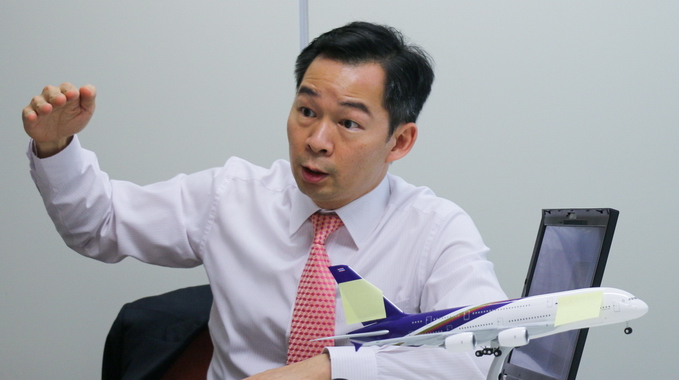
There has been a great deal of controversy over the expansion of the third runway system in Hong Kong. Hongkongers concern about the issues arisen on seabed contamination and noise pollution as well as employment opportunities. In this issue, Prof. Alan Lau Kin-tak, Associate Dean of the Faculty of Engineering, shared his views on the advantages of the third runway expansion by looking into these three areas.
How does the "Deep Cement Mixing" process used in developing the third runway minimize seabed contamination and noise pollution?
Conventional reclamation process indeed causes seabed contamination. The seabed in Hong Kong has long been contaminated with deleterious mud. In the conventional process, deep drilling will release heavy metals trapped on the seabed. Living things in the sea will also be contaminated in the course of mud drilling and disposal. This will in turn harm the public health when people take in contaminated seafood in the food chain.
Therefore, a non-drilling method named "Deep cement mixing" will be used for developing the third runway. In this process, cement is injected into the ground through drilling pipes. Through mixing, the hardness and strength of the cement-soil mix will be increased for speeding up ground stabilization and land reclamation. Though the cost of this method will triple or quadruple that of the conventional method, noise level can be reduced in half and water quality and ocean ecology can be maintained at an acceptable level, according to the Environmental Impact Assessment.
How does the runway expansion deal with the aggravation of air and noise pollution?
Let me share the views from another perspective on not expanding the third runway. In that case, airlines may develop their new flights at neighbouring airports in Guangzhou and Macau. Flying over Hong Kong's airspace, those flights will also cause waste gas and noise issues. We have no way to control whether those airports will conduct environmental impact assessments, or expect them to use environmental-friendly aircrafts. Thus, the air and noise problems may be even worse.
On the other hand, the Hong Kong airport is controlled under stringent aircraft noise standards. The Airport Authority Hong Kong (AA) has been gradually limiting the movements of noisy aircrafts and encouraging airlines to use aircrafts with eco-friendly engines and winglet design. Noise generation and fuel consumption can thus be reduced by 10 percent, compared with former types of aircrafts. In addition, when the new runway is built, the existing navigation system can be enhanced to enable direct landing of aircrafts. Compared to the existing gradual descend method, the aircraft emission will be cut by 15 percent.
With one more runway, AA can adjust the flight paths by setting aside the South Runway for spare use at night. This can reduce the number of aircrafts overflying populated areas like Tung Chung, Sa Ho Wan and Tuen Mun and thus minimize the noise impact.
How does third runway development stimulate employment?
Hong Kong Airport is the world's busiest cargo gateway and one of the world's busiest passenger airports with over 56 million passengers and more than 4 million tonnes of air cargo passing through Hong Kong yearly. The flight movements have reached 350,000 flights (i.e. over 1,000 flights per day). Currently, more than 110 airlines are operating at the Hong Kong International Airport and providing flights to 170 destinations worldwide.
The aviation industry anticipates that the new runway will create many employment opportunities. The industry workforce can be boosted from 65,000 to 140,000, not including those in the retailing and tourism industries.
Overall speaking, should Hong Kong develop the third runway?
Hong Kong International Airport has long been one of the busiest and best airports in the world, marking the global leading position of the local aviation industry. Also, the good quality and efficient services in aircraft maintenance and baggage handling have been well recognized. Thus, the saturation of flight movements occurred earlier than expected. Therefore, the third runway expansion is of vital importance.
I think as long as the related parties properly handle the environmental issues and minimize the unnecessary pollution, expansion of the third runway can better the overall development of Hong Kong.